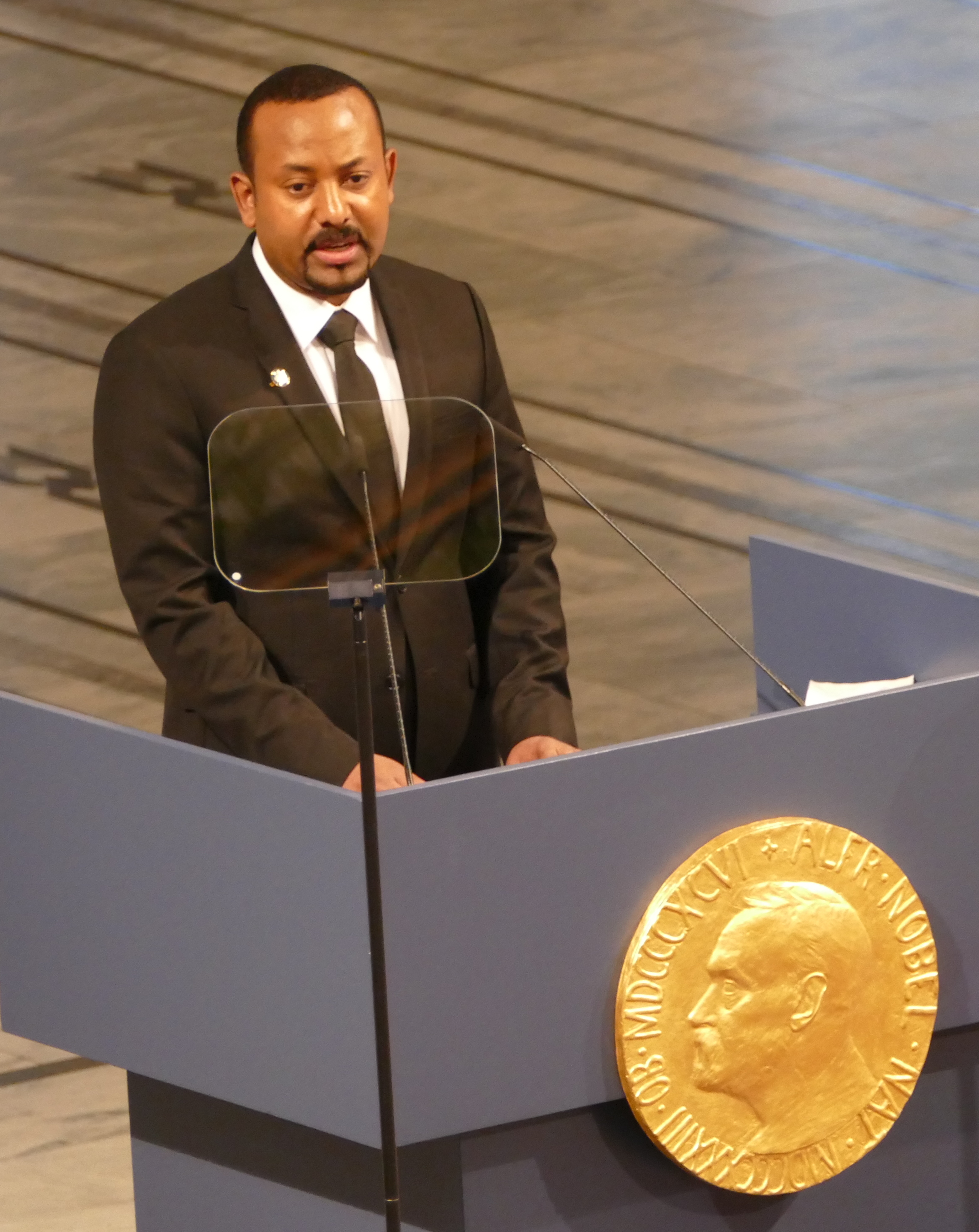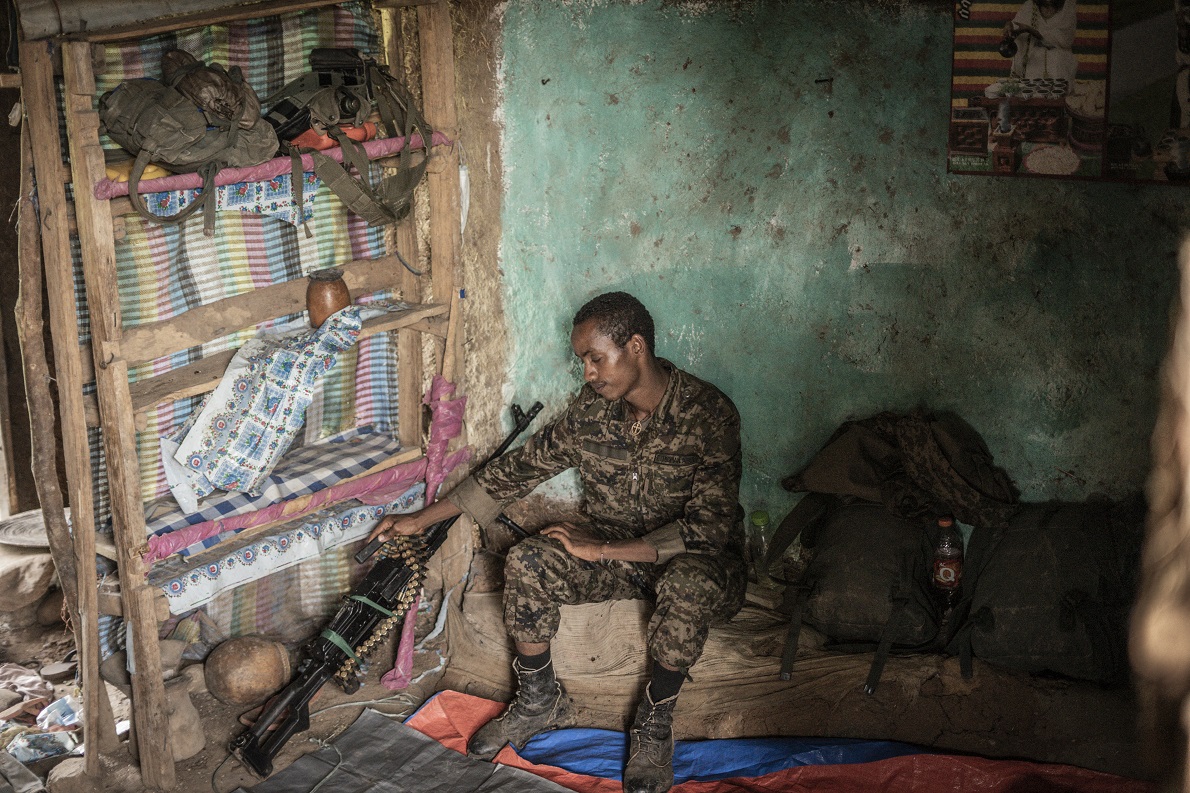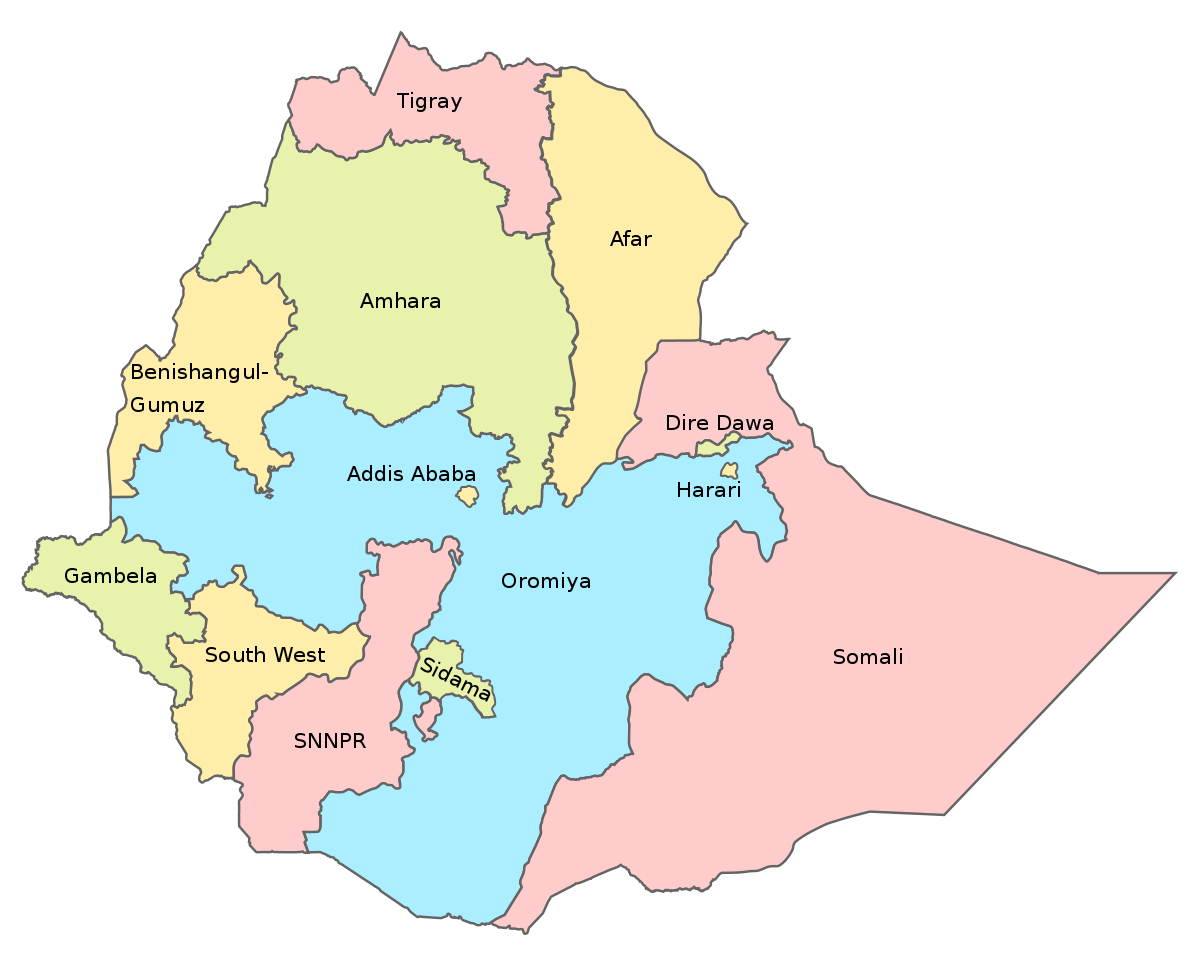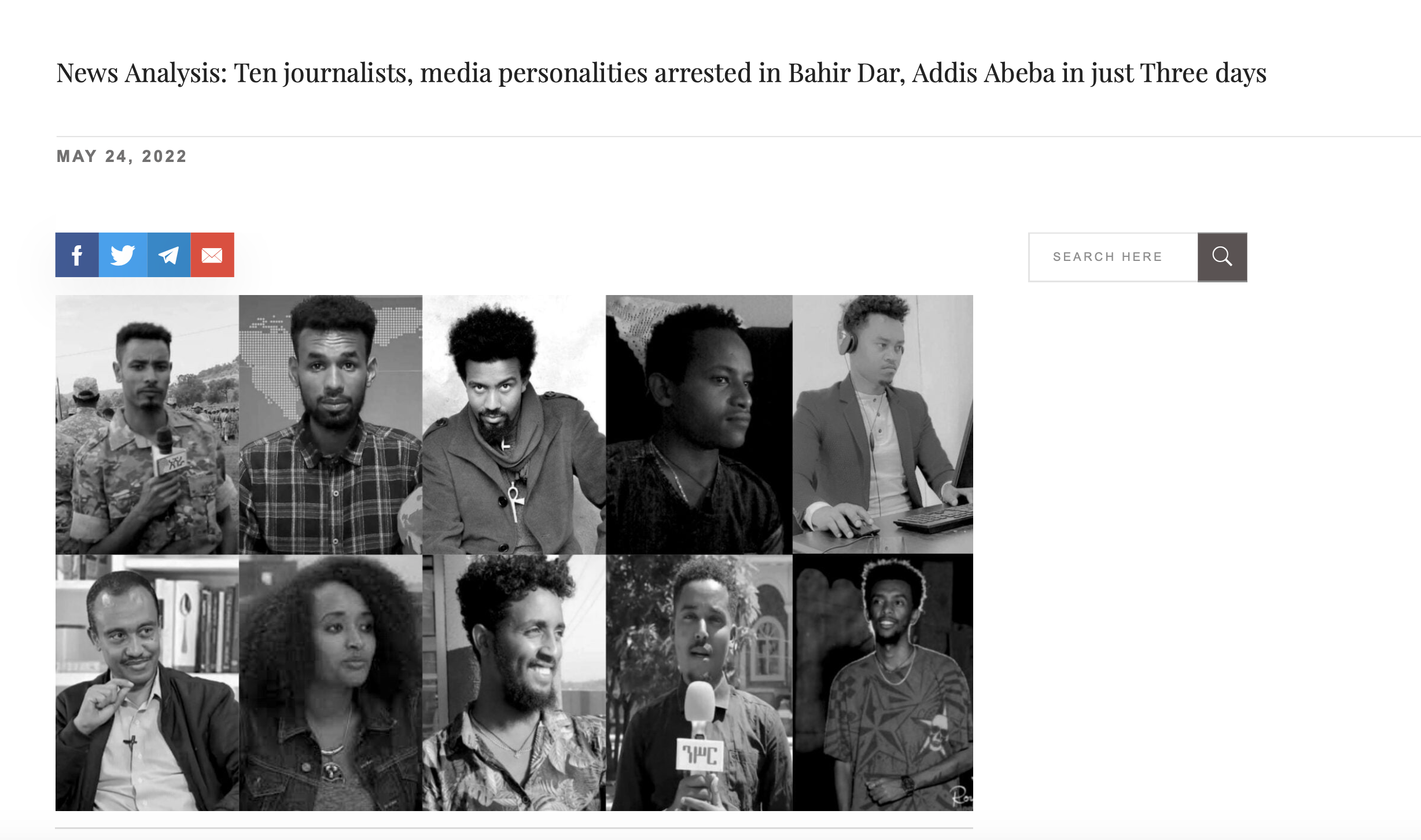Nobel prize winner in Economics Amartya Sen in Identity and Violence argues that “the imposition of an allegedly unique identity is often a crucial component of the ‘martial art’ of fomenting sectarian confrontation.” The singular affiliation view suppresses the different categories and groups to which people belong, and thus becomes a key factor in fomenting violence. In the case of contemporary Ethiopia, sectarian violence is a direct consequence of colonialism, the ethnic-based structure of its Constitution and decades of failure to bring perpetrators of human rights violations to justice. The reign of Mengistu Haile Mariam, known as the Derg era, lasted 17 years, from 1974 until his overthrow in 1991 by the Ethiopian People’s Revolutionary Democratic Front (EPRDF), a coalition of ethnically based political movements within which the Tigray People’s Liberation Front (TPLF) assumed a dominant position.
The Ethiopian People’s Revolutionary Democratic Front (EPRDF) was a coalition comprising also the Amhara National Democratic Movement (ANDM), the Oromo People’s Democratic Organization (OPDO) and the South Ethiopian People’s Democratic Front (SEPDF). The Amhara and the Oromo are the largest ethnic groups in a country that has over 80 ethnicities. The Tigrayans, although an ethnic minority, via the TPLF alone dominated the Ethiopian political arena for 27 years.
For nearly three decades, from 1991 to 2018, the TPLF-led EPRDF regime ruled with an iron fist maintaining a dictatorial stronghold in Ethiopia, best described as ethnic federalism or ethno-fascism, an oppressive, violent system that many analysts such as Eritrean journalist Elias Amare equates with the South African Bantustans.
A problematic Constitution and its legacy
The Ethiopian constitution adopted on December 8, 1994, allows for the politicization of ethnic identity. Commenting on the transformation of Ethiopia from a unitary state to a federal state that established regional states based on the dominant ethnic group inhabiting the respective regions, University of Gothenburg professor in Education Girma Brhanu in an article writes: “The new post-Derg political order was unique in many ways. It was a strange system not only by Ethiopian, but even by African standards. For example, contrary to the trend in the rest of Africa where political mobilization based on race, religion, ethnicity, or such primary identities were frowned upon, if not constitutionally proscribed, in Ethiopia, these very divisive attributes were turned around and made foundational blocks of the newly constitution yielding the ethnic ‘federal system.’”
The Constitution has made it easier for minority ethnic groups to be marginalized and disadvantaged in “majority” regions, allowing for the revival of oppressive and discriminatory practices under the pretext of enjoying cultural rights. The impact of this lack of protection is most visible in Oromia Region where millions of Amharas reside as an ethnic minority. A recent report by the Amhara Association of America (AAA) denounces this current on-going genocide.
Present day Prime Minister Abiy Ahmed was ushered into power in April 2018 after four years of massive countrywide protests, which demanded the departure from the repressive regime and respect for human rights. Abiy Ahmed inherited a poisoned chalice, yet vowed to end Ethiopia’s era of ethnicity-based politics: in December 2019, the factions based on regional ethnicities – the Oromo Democratic Party (ODP), Amhara Democratic Party (ADP) and Southern Ethiopian Peoples’ Democratic Movement (SEPDM) – merged into the new Prosperity Party (PP). The TPLF declined to join the newly established coalition.
The reorganization of the EPRDF into the Prosperity Party (PP) is however superficial as it still rests on the existing ethnocentric structure, maintaining an Oromo, Amhara and Southern Ethiopian Peoples’ Democratic Movement faction within the Prosperity Party.
On November 3, 2020, the TPFL attacked the Ethiopian National defense Force’s (ENDF) Northern Command headquarters in Mekelle, as well as army barracks in Adigrat, Agula, Dansha, and Sero in the Tigray Region. A BBC article gives a harrowing account of the fate of the ENDF soldiers attacked, and places the number held captive as high as 10,000. Many of those were forcibly displaced across the regional border to the Amhara region where they joined the Internally Displaced Persons (IDP) camps, with thousands of others killed or kept in captivity to serve the TPLF war effort. With the weapons they acquired they were able to attack Eritrea’s capital Asmara, as well as Bahir Dar, the capital city of the Amhara region.

On November 4, 2020, Prime Minister Abiy Ahmed decided to attack Tigray to put a halt to the TPLF offensive. The TPLF was officially designated a terrorist organization in May 2021, six months into the war.
“Ethiopia took legitimate military action in its Tigray province to preserve the country’s unity and stability”, the chairman of the African Union Commission Moussa Faki Mahamat stated following a meeting of the Intergovernmental Authority on Development (IGAD) in December 2020 emphasizing that Ethiopia’s military campaign in its Tigray province was “legitimate for all states.” Despite these pronouncements by the African Union and the IGAD, to this day Ahmed’s military campaign is not considered a legitimate and necessary law enforcement operation by a large part of main stream media as well as academic accounts.
Photo reporter Jemal Countess, speaking to BreakThrough News journalist Rania Khalek, calls the November 3 2020 attack an outright attempted regime change on the part of the TPLF, which includes the attack and subsequent massacre at Mai Kandra in the Amhara region on November 9 and 10, 2020, where up to 1,500 ethnic Amhara were killed.
Relentless Impunity and the effectiveness of the Pretoria agreement
Another key factor contributing to present-day on-going violence, beyond the reductionist identity politics the constitution enshrines, is the impunity for past massacres. To this day there has still been no adequate, let alone independent, investigation into abuses committed by security forces during the 2014 to 2018 protests, nor has anyone from the previous TPLF-led EPRDF regime been brought to trial.
For example, in 1991 the TPLF annexed the Welkait territory to the Tigray region renaming it West Tigray. Amhara in the region were persecuted: they were not allowed to practice their culture; the use of the Amharic language was prohibited; place and personal Amharic names were changed; ethic-based identity cards were enforced.
Researcher at the Austrian University of Klagenfurt, Center for Peace Research and Peace Education, Sonja John taking the Welkait case as a litmus test, shows that state institutions under Abiy’s regime have failed to accommodate democratic processes when addressing the contested area. In 2016, the Welkait Committee members had been arrested and tortured for petitioning for identity recognition of the Welkait Amhara population. A testimony, Zafie Atalay, interviewed in 2020, reveals the harrowing reality of the previous TPLF rule in the region: “Now it is worse than before. You cannot speak Amharic at all, you cannot have Amharic songs on your phone or flash drive, you cannot display the national flag without the EPRDF symbol; you cannot wear the shirt of the Gondar football club Fasil Kenema. You risk your life simply being Amhara.”
Mass graves of killings committed by the TPLF against Amhara civilians in Welkait were recently uncovered, yet no actions are taken by the Abiy government to hold those responsible within the TPLF accountable. The November 2020 TPLF armed aggression has so far been downplayed in mainstream media, which has deliberately distorted the war’s events.

The Pretoria peace agreement (November 2, 2022), which was supposed to put an end to the two-year war, had called for the complete disarmament of the TPLF’s regional forces within 30 days of its signing. Yet, this was never accomplished by the federal government, thus allowing the TPLF to remain a major military threat in the region. The agreement also called on Abiy’s government to facilitate the Parliament’s lifting of the TPLF as a terrorist organization that it did on March 22, 2023.
The Pretoria agreement between the federal government and the Tigray region did not include other areas and actors who were also severely affected by the war. “I would not call this peace”, says AAA Director Robel Alemu, explaining that while the peace deal was being negotiated, severe violence was on-going in the Oromo region, involving the collaboration between the Oromia special forces, the Oromo Liberation Army as well as the country’s national army targeting the Amharas.
Clashes had occurred in the previous years in Amhara, Afar, Gambela, Somali and Benishangul-Gumuz regions. “This is a trajectory for an all-out civil war which risks destabilizing the entire Horn of Africa region,” Alemu warns. Instead of acknowledging the gravity of the massacres and ethnic cleansing against the Amhara, Abiy Ahmed has downplayed their seriousness and referred only in passing to these numerous incidents as merely inter-communal conflicts.
Today the Oromo-led Prosperity Party seems to be following in the footsteps of the TPLF-led EPRDF regime. British charity worker Graham Peebles in a recent article underscores: “The focus of the regime’s enmity is the Amhara people, a large ethnic group making up around 30 percent of the population. In the last four years Amhara communities living in the Oromo region have been subjected to sustained violence by Oromo nationalists: the Oromo Liberation Front (OLF)/Oromo Liberation Army (OLA), together with Oromo Special Forces (OSF) and the Queero (Oromo youth group) are behind the violence, with it seems, the approval, perhaps active participation, of the government.”
In Ethiopia’s complex security framework, each region has a paramilitary force. In April of this year, Abiy Ahmed called for the disbanding and disarmament of these regional forces. This is a welcome move towards the creation of an inclusive national Ethiopian army, if it did not signal out the Amhara Special Forces (ASF). On April 8 the government moved the Ethiopian National Defence Force into the Amhara region with orders to disarm and dissolve the only body offering protection to the people, Chairman of the AAA Tewodrose Tirfe explains.
A unilateral disarmament of the Amhara Special Forces, as well as of the Fano ethnic Amhara self-defense force, who fought alongside federal troops during the recent 2020-22 war against the TPLF, would leave the Amhara region defenseless and unable to protect its borders from the TPLF in the North, the OLF/OLA to the South, as well as from Sudan in the west.
AAA is calling on the international community to implement targeted sanctions against Prime Minister Abiy Ahmed, Chief of General Staff of the Ethiopian National Defence Forces General Birhanu Jula and Deputy Chief of Staff of the Ethiopian Defence Force, General Abebaw Tadesse for inciting violence.
Abiy’s government is continuing an extremely violent crackdown that escalated in April 2021 against journalists, human rights defenders, academics and politicians-mainly of Amhara ethnicity. Thousands have been arrested; thousands of FANO self-defence force members have been imprisoned together with their leaders.
On February 6, 2023, the AAA and Centre for Human Rights, Pretoria University (CHR) submitted a complaint to the African Commission on Human and Peoples’ Rights against the Ethiopian Government. The complaint is made on behalf of ethnic Amhara residents in Oromia region who face mass atrocities such as extrajudicial killings, arbitrary arrests, property destruction, communication blackouts, violent dispersal of peaceful protests and forced displacement at the hand of both state and non-state armed forces and militias.
Transethnic identity as a way forward
19th century Ethiopian Emperor Menelik II’s reign pushed for the creation of a centralized state where geography-based criteria, and not ethnicity, played a political role; it took on a pan-Ethiopian identity in its fight against the Italian invaders.
Ethnic conflicts are rarely the result of ethnicity per se, but rather a result of the politicization of ethnic identity by self-seeking politicians. Sarah Vaughan, political scientist researcher at Edinburgh University, has illustrated the significant parallels between the ethnic federalism of the 1990s and the Italian administrative arrangements of the 1930s. During colonialism, identity reductionism was skillfully sought by the colonizers: knowing that Ethiopian unity had defeated them at Adwa in 1896, when Italian fascists invaded the country again in 1935 they deconstructed Ethiopian nationhood, claiming that the Ethiopian state was a collection of ethnic groups dominated by Amhara colonial rule. For example, the oppression of the Oromo under Amhara domination became the central theme of Italian propaganda and of its de-Amharization campaigns.
This colonial strategy of divide and rule was devised to disenfranchise non-Amhara populations by undermining all forms of collective resistance: “The narratives of Amhara colonization unleashed by Italian fascists on Ethiopia for their own ends, have done lasting damage that has long outlived their own attempted colonization,” writes Political Science researcher Birhanu Bitew Geremew.
The de-Ethiopianization of Ethiopia was also a core policy of the TPLF that rewrote the country’s ancient and recent history, demonizing the Amhara who were severely persecuted under its regime. Former TPLF Prime Minister Meles Zenawi undertook forced displacement of tens of thousands of Amhara from Southern Ethiopia, calling the North Gojam Amhara “sefaris,” namely “criminal squatters or land grabbers”. The TPLF depicted Amhara as “outlaws”, “oppressors”, and “enemies” of other “nations and nationalities,” so as to marginalize and exclude them from political power.
Trade unionists, who had a transethnic identity, were targeted under the TPLF-led EPRDF regime. “I am positive that the reason why the government was after me was my position regarding its education policy, plus my view that labor, teachers and society cannot be organized as a whole along ethnic lines. That would endanger social cohesion,” wrote former head of the Ethiopian Teachers’ Association Taye Woldesmiate in a 2002 interview with the International Labor Organization. Woldesmiate had been arrested, imprisoned and tortured, spending six years in solitary confinement – in present-day Ethiopia there are no independent trade unions.
Under the TPLF rule advantages in land ownership, administrative posts, job opportunities or economic activities were distributed on an ethnic basis, often crowding out the minority Amhara populations, who had no other choice but to leave the region and become Internally Displaced People.
The 2007 population census shows a significant decline in the total record of the Amhara population. The Commissioner of the National Population and Housing Census Commission briefed the Ethiopian parliament that at least 2.5 million Amhara were missing for unknown reasons.
That genocide is happening in Ethiopia targeting Amhara was reported by Amnesty International, in a report on the summary killing of Amhara residents of Tole Kebele, in Oromia Region on June 18, 2022; by Gregory Stanton, president of Genocide Watch, as well as the Lemkin Institute in June 2022.
Amharas are currently targeted and blocked from travelling to the capital Addis Ababa; those living in Addis Ababa face ethnic-based evictions as 15,000 homes have recently been destroyed; Amhara intellectuals and political leaders are also targeted; a recent 2019 Amhara region coup d’état attempt destabilized the region even further; there are currently hundreds of thousands of Amhara internally displaced across Ethiopia.

Just like its precedessor EPRDF, Ethiopia under the Prosperity Party is a de facto one-party dictatorship. Calling for a citizen-based multi-ethnic Ethiopia, the party Balderas for True Democracy founded in 2019 by renown journalist Eskinder Nega was forced to disband, as Negar was recently arrested again and only liberated after relentless popular demonstrations in the Amhara region called for his freedom. Other parties calling for a citizen-based multi-ethnic Ethiopia have been partly co-opted such as the leaders of the National Movement of Amhara (NaMa) or Ethiopian Citizens for Social Justice Party (E-ZEMA) among others.
Abiy’s regime seems to be reinforcing the ethnicity-based apartheid federalism: recently three new regions were carved out from the SNNPR region – Sidama region in July 2023, South West Ethiopia Region on November 23, 2021, and the Southern Ethiopia Region, which will be established on July 2023 – thus further balkanizing the country, rather than moving toward a pan-Ethiopian geography-based federal structure, more fitting for a country that contains 110 million people and 80 different ethnicities.
#Ethiopia: Supporters of Eskinder Nega, founder of the opposition Balederal for Genuine Democracy, turned up in front of…
Pubblicato da Addis Standard su Lunedì 25 ottobre 2021
There seems to be an dreadful continuity in the persecution and genocide of the Amhara under Italian fascism, the TPLF regime and today’s Oromo-led PP. Amhara identity, in its current form, is a relatively recent construct caused by alienation and the threat to its existence. Amharas tend to embrace a pan-Ethiopian vision for the country, also due to the fact that their ethnicity is present in most regions of Ethiopia. A huge Amhara resistance is growing today in Ethiopia and amongst the diaspora, which is calling for a halt in the on-going ethnic-based persecutions, as well as a citizen-based multi-ethnic Ethiopia.
Embracing the understanding that people are diversly different, recognizing our plural layers of identities, is according to Amartya Sen a way to overcome any form of dangerous identity policies. “Amhara nationalism should be revisited and rebuilt on pride, popular self-esteem and the mythos of love rather than hatred and resentment. In an environment characterized by competing nationalisms, agendas are fabricated and regularly disseminated in efforts to achieve narrative dominance, Amhara nationalism should neither fall into the trap of agenda-setting of others, nor should it be an ideology of reaction,” writes international law and human rights scholar Zola Moges.
Cover Photo: Members of the Amhara militia ride in the back of a pick up truck in the city of Gondar, Ethiopia, on January 17, 2022 (credits: Eduardo Soteras/AFP.)
Follow us on Facebook, Twitter and LinkedIn to see and interact with our latest contents.
If you like our analyses, events, publications and dossiers, sign up for our newsletter (twice a month) and consider supporting our work.






